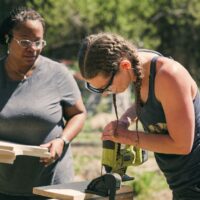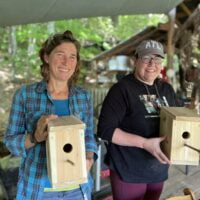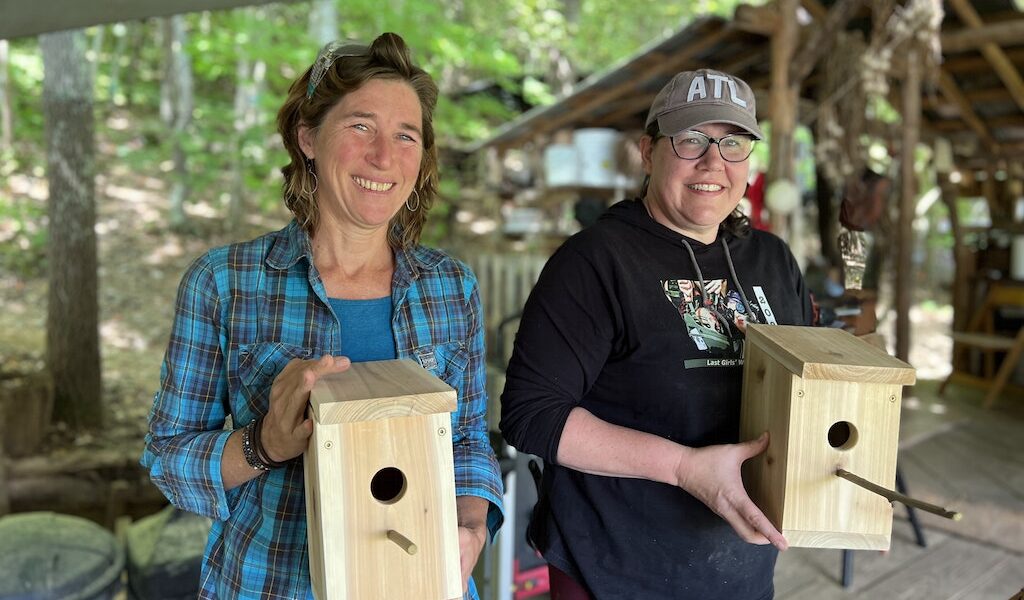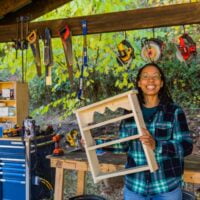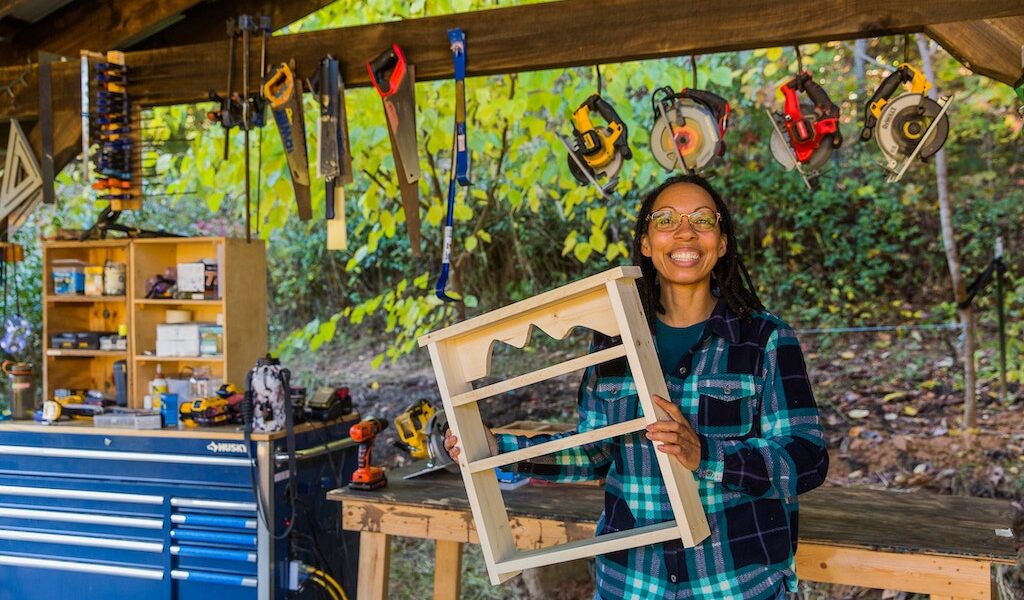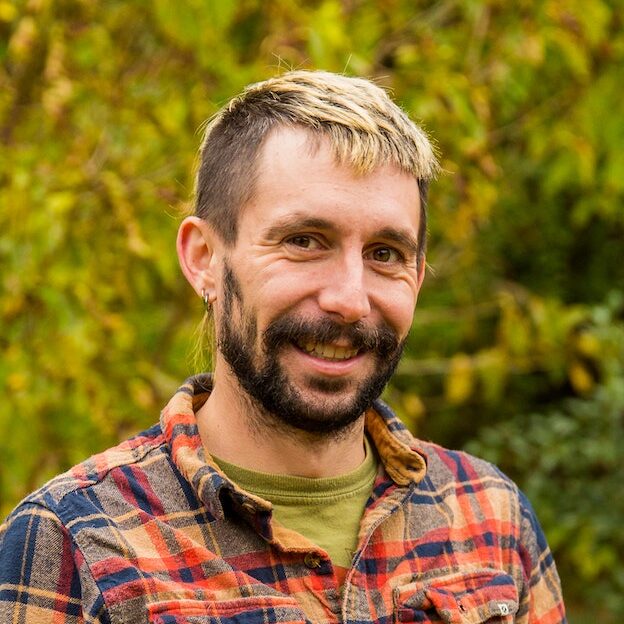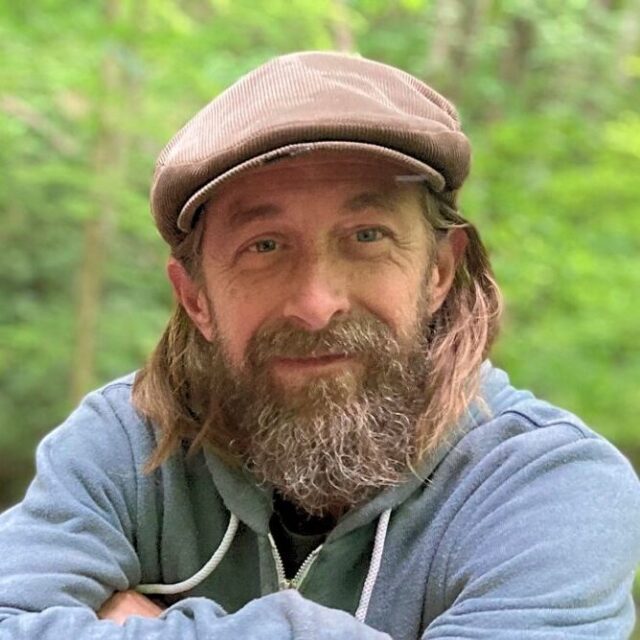Why Women’s Carpentry?
Let’s face it, female-bodied folks are less likely to grow up using tools and building things than our male counterparts. Women also don’t see folks who look like us doing carpentry for themselves. The story that working with wood is only for men is outdated and in need of rewriting!
This class is intended to respond to that need. It gets women and non-binary folks up-to-speed on basic carpentry skills, including working with wood, planning and designing simple projects, and using hand and power tools safely and effectively.


There is a special magic that happens when we create a space to learn carpentry without any macho energy. One of our male teachers said it best, “There is a total lack of competition, and this makes for a place where learning can happen in a very different way.”
This class is open to all women (including trans) and non-binary folks.
If women’s carpentry isn’t for you, but you want to learn the basics, please check out our All Genders Carpentry Class.
Focus is placed on creating a safe, comfortable, relaxed and fun learning environment in which students with beginning to intermediate skill levels can thrive. Our goal in this basic carpentry course is to help each student learn, rather than to progress projects at a fast pace.
What our students say
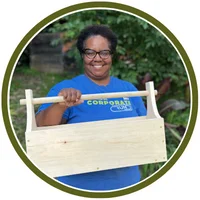

Leslie
Virginia
College Worker
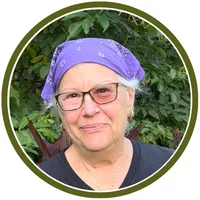

Anne
New York
Retired Nurse Practitioner


Julia
Colorado
Marketing Director


Deanna
Virginia
Massage Therapist and Mother
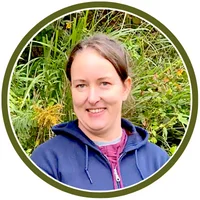

Jeanne
Georgia
Project Manager


Patty
South Carolina
CEO of a Manufacturing Company


Charis
Virginia
Insurance IT Systems Integrations
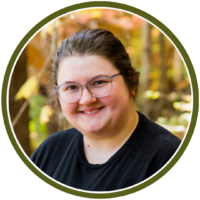

Lydia
South Carolina
Software Developer
This women’s woodworking class is truly about the basics of carpentry.
It’s about learning to use tools and getting comfortable with them by working on some large and small projects.
No prior experience is required for this carpentry course. All ages are welcome; we’ve had students from 17-74 join us and love the class!


That said, if you have experience but don’t have mastery of safe and ergonomic use of the table saw, chop saw, circular saw, and hand tools, this is also the class for you. If you’re interested in bigger projects, especially structural building, we offer an Advanced Women’s Carpentry Class for graduates of the basic class. In the advanced class, students learn to build a basic shed. Anyone who has completed the basic carpentry class will be well prepared for the advanced class. Plus, when you sign up for this more advanced class at the same time as the basic class, you get a discount!
Another building class option, if you really want to dive in deeply, is our Tiny House Building Class. This is appropriate for graduates of just the basics class, or basics + advanced. If you’re planning to take a series, we recommend starting with basics, then moving on to either advanced or tiny house building, or taking all three. It doesn’t make sense to take the basics class after the tiny house class.
Prepare to tame those mythical beasts (power tools) and make them part of your building repertoire.


Choose a 4 day intensive carpentry course, or a 5 day version that is more relaxed
For the last 10 years, our Women’s Basic Carpentry classes have always been four days long. We’ve refined the schedule to cover a wide range of content in a short amount of time, transforming the skills and ability of students quickly. Each day and section of the class builds on the one before it, and all are essential. The schedule is full and the pace steadily active; the days are packed with learning and practice, broken up only by lunch, and one or two shorter breaks. Over the years we’ve received feedback that some students would prefer more breaks and shorter days. We can’t see a way to cut content and still deliver the quality education we pride ourselves on. So, this year we’re trialing a five-day option. The course content and cost will be the same, but learning will be spread out over five days instead of four. If you’ve got the time and want to learn in a more relaxed environment, rather than an “intensive,” the longer option may be for you.
What to Expect: Learn Basic Carpentry Skills

During this four or five-day course, we will cover basic carpentry skills through lectures, demonstrations, and lots of hands-on practice.
Topics covered include:
- Safe and effective tool use (including hand and power tools)
- Choosing the right tools for different kinds of jobs
- Accurate measuring and cutting
- Hands-on tool practice in a group project setting
- Small project design and planning
- Lumber (wood) selection and purchasing
- Implementation of your own project
This wealth of information will be specifically tailored for female bodies. There will be ample time to dialogue with instructors and get clear about the subject matter. We firmly believe that there are no “dumb questions.”
Carpentry Class Schedule and Timing
Four day intensive schedule
Thursday 9:00 am-5:30 pm
Friday 9:00 am-5:00 pm
Saturday 9:00 am-5:30 pm
Sunday 9:00 am-4:30 pm*
Each day includes a one-hour lunch break.
The five day “relaxed class” schedule
The five day sessions start on Wednesday and run through Sunday from 10am – 5pm each day (4:30 on Sunday). Students will get a 1 hour lunch plus multiple luxurious breaks throughout each day. We’ve added this option for students who want more of a “retreat” atmosphere.


Please note: Some classes will have slight changes in the schedule due to weather, the needs of the projects, and the desires of the group.
* Class ends by 4:30pm on Sunday, and students may leave whenever they finish their personal projects on this day. During our lunch break on Sunday we hold a closing circle, which we encourage everyone to stay for, if they’re able.
The following day-by-day schedule is for the four day class. During the five day class, the same content is distributed over five days.
Day 1: Tools, Tools, Tools


And women’s empowerment!
Our theme of day one is women’s empowerment. To begin, we’ll have an orientation and overview of the class. Then we’ll move into the bulk of the day: tools! We’ll cover tool choices, their ergonomic use, and safety. Each tool will be introduced and demonstrated in detail, then you’ll get a chance to try it yourself (with plenty of guidance and support).
When we cover the more intimidating power tools, the class will break up into three groups, so each person can get personalized attention. Whether you’re building a birdhouse, bathroom shelves, a bike shed or a log cabin, having the right tools, and using them properly, makes all the difference.
Carpentry tools we’ll cover on day one include:
- Circular saw
- Carpenter’s pencil
- Utility knife
- Measuring tape
- Speed square
- Safety equipment
- Table saw
- Miter saw (sometimes called a chop saw) and sliding miter saw


Day 2: More Tools, Project Design, and a Field Trip
Explore more tools, plan out your personal woodworking project, and learn to navigate a lumber yard. On day two, you’ll also choose your own small personal project (to be built on day four). Of course, you’ll get plenty of support and guidance from the instructors. In order to ensure optimal learning of various techniques and every student’s success within the timeframe of class, we limit personal project options. We offer a selection of simple objects to build, which we call “learning projects.” You can choose to build a tool caddy, a small shelf, or a birdhouse. After lunch, we’ll head to the lumber yard to pick out materials for everyone’s personal projects. While we’re there, we’ll explore lumber selection. Before our field trip, we’ll discuss what kinds of wood are appropriate for different projects, and go over screws and other fasteners and their application. Equipped with this knowledge, everyone will buy what they need for their personal projects, which we’ll tackle on day four. Next, we’ll work in small groups on simple, real-world projects. Some of these will be Wild Abundance infrastructure, while others may be for neighbors, community members, local non-profits, or to be sold to the public for the cost of materials. We won’t be trying to get a whole lot accomplished on these projects, but instead will focus on starting to master tools that have been covered so far in the class. Many students tell us that this is the most valuable part of class. Indeed, it’s a way to get tool use into your muscle memory. That way, when you go home you’ll have a feeling of familiarity with the tools; you’ll know them, rather than just know about them. During group project work, students will practice measuring, making cuts, using levels and speed squares, and fastening boards. Beyond the basic use of tools, we’ll also practice working together and getting our hands, minds, and bodies in the groove of doing serious carpentry. These projects are invaluable for getting the basics of carpentry deep into your bones. It’s one thing to learn about tools, it’s something quite different to get proficient with them, and that’s just what students will do during these group projects. On day four, everyone will get to measure out, cut the pieces for, assemble, and complete (time permitting) a woodworking project of their very own—with lots of support, if they want it! To do this, we’ll reference the designs we solidified on day two, and utilize the materials we purchased at the lumber yard and then cut on day three. Throughout the process, instructors will circulate to answer questions, provide guidance, and avert disaster. Students will work semi-independently, making use of all the skills and confidence they’ve been building over the past three days. We’ll close up the wood shop at 4:30pm (earlier than days 1-3). Individuals will be done with the class when they complete their personal projects (usually between 3:30 and 4:30). If you have time constraints, we advise you to choose a simple project like a small shelf. The Women’s Basic Carpentry class “woodshop” is one of the lovely Wild Abundance campuses. During the class, we work in several covered areas amidst gorgeous mountain views, native plants, and a bustling land-based living school. There, students can use tools and work on projects with fresh air and direct connection to the natural elements. Getting to learn and work in this simple, outdoor woodshop can be very inspiring; you don’t need a fancy, dedicated space in order to use tools and build beautiful things! Please note: class happens mostly outdoors (under cover), rain or shine, whatever the temperature. You might be asking yourself, can I really learn to use power tools and build things on my own in a weekend woodworking class? And we’re here to tell you that, yes, it’s absolutely possible! In one long weekend, you can get comfortable with tools, understand how to work with wood, and learn how to plan out and design your own simple carpentry projects. We’ve seen it happen time and again, with hundreds of satisfied students. We’ve offered this class over 50 times, and with every session we receive and integrate feedback from our students and teachers. That means, over many years of care and commitment to serving students in the best way possible, we’ve been able to create a structure that is optimal for learning. We are continually blown away by the progress our students make in just four days! Of course, people spend lifetimes perfecting their woodworking skills, especially those who build houses or do fine finish work like cabinetry or furniture making. It’s not realistic to learn to do these high-level kinds of projects in a long weekend workshop. However, you can take the first steps that every carpenter and fine woodworker once took. And you’ll leave with the ability to turn your basic ideas into reality, right away. The video below was made by Wild Abundance founder Natalie Bogwalker some years back and some specifics are out of date. Please refer to the text above for accurate details about the class schedule and projects. A new video is currently in the works! Our Paint Fork campus is a bustling creekside landscape with gorgeous mountain views, a breathtaking timber-framed pavilion classroom, and spacious covered open-air wood shops for learning building and carpentry in all weather, plus other lovely features. The Paint Fork campus is 30 minutes north of Asheville. Please note: our campuses are all unconventional, with rustic amenities and uneven ground. Read more about Planning your trip and about our campuses. You’ll receive detailed directions on how to get here upon registration. Regular Pricing: $850 – $1,700 Please pay what you can afford. The median price is suggested to help cover the full cost of hosting this class. Please select the low end of the sliding scale if you are low income. If your household income is over $115,000/year, please select the maximum fee. Please place yourself in this range where you deem appropriate, based on your income. Regular Pricing: A single, $250 discount will be applied if companion courses are purchased together. Please pay what you can afford. The median price is suggested to help cover the full cost of hosting this class. Please select the low end of the sliding scale if you are low income. If your household income is over $115,000/year, please select the maximum fee. Please place yourself in this range where you deem appropriate, based on your income. Please note that our Advanced Women’s Carpentry Class is only available to those who have already taken the Women’s Basic Carpentry Class. Course Dates: You'll also receive our newsletters On day two, we’ll get our hands on more tools, learning safe and proper use of:


Your Personal Project
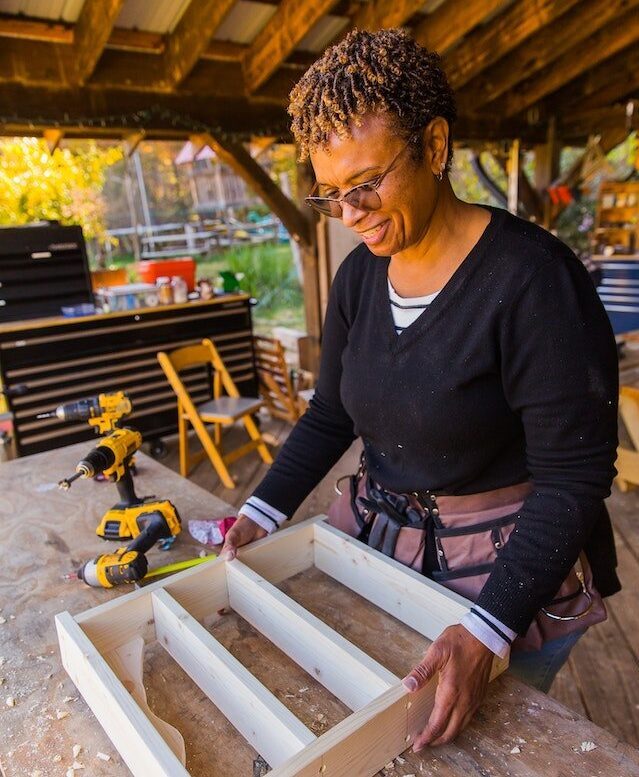

Day 3: Tools Finale, Plus Hands-on Basic Carpentry Practice
On day three, we’ll have our third and final tools class. This time we’ll cover:




Some examples of group projects that we have worked on in the past:
Day 4: Your Own Woodworking Project
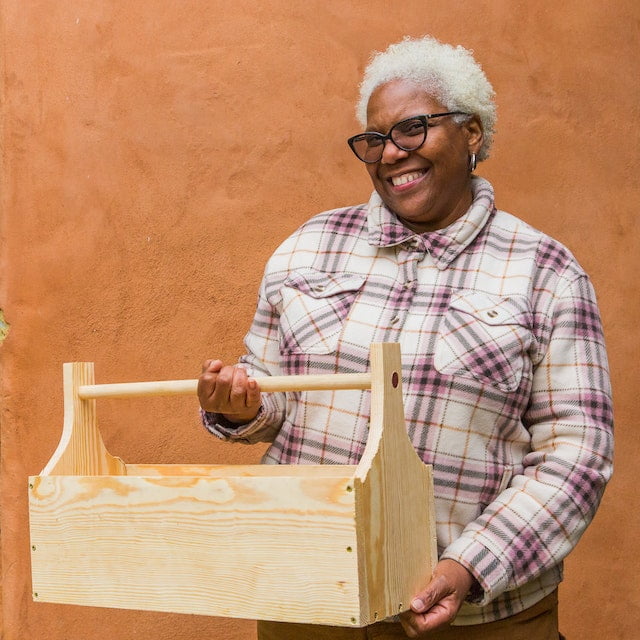

Build your very own rough and simple masterpiece
Note on Day Four End Time:
Enjoy our beautiful outdoor woodshop near Asheville, NC


You’re just a weekend woodworking class away from building your ideas into reality
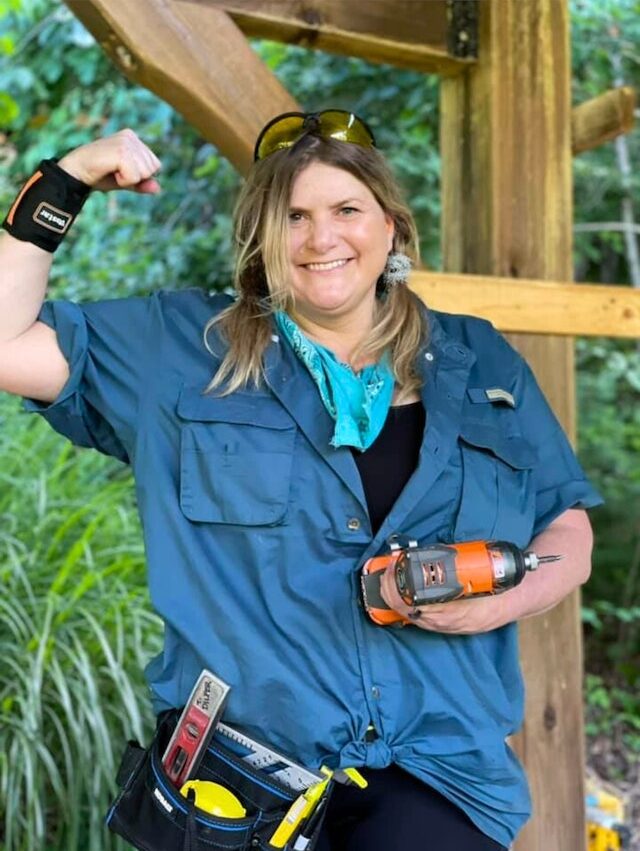

Frequently Asked Questions about Women’s Basic Carpentry
Instructors
Nadi Mond
Nadi (they/them) has been on a quest to study traditional woodworking, metalworking and ancestral skills ever since leaving behind their Aerospace Engineering path in Germany where they grew up. While attending University in Germany they turned an old early 1900s circus trailer into their first tiny home they lived in for the duration of their ...Madison Moore
Madison’s stoked to be teaching with Wild Abundance because she’s super passionate about empowering women with skills in a safe & welcoming environment. She’s been building on her own since middle school and also worked for a number of years on a framing crew doing residential carpentry. When not teaching, Madison spends a large portion ...Pete McKelvey
After getting a degree in New Media in 2013, Pete didn’t take long to realize that sitting behind a computer screen just wasn’t going to cut it. A big believer in hands-on learning he threw himself into the world of carpentry, learning on the job while working for small custom home-builders and eventually taking a ...Alex Kilgore
Alex (he/him) has been learning and teaching primitive and traditional living skills since 1995. He began with a formative apprenticeship with Steve Watts, the founder of the Society of Primitive Technology and director of the Aboriginal Studies Program at the Schiele Museum of Natural History. In 1997, Alex completed his degree in Outdoor Experiential Education ...Alexandra Miller
Alexandra Miller Alexandra Miller (she/her) started out her career as a manufacturing engineer. In 2016 she fled corporate life to hike the AT and travel, and has spent as much time as possible in the woods since. She has an encompassing love for the natural world, especially mycology, botany and the interdependencies of ecology. The ...Quetzal Jordan
Originally from British Columbia, Canada and raised in Tampa FL, much of Quetzal’s (she/her) time is currently spent side by side with Mel Chin a conceptual visual artist in Burnsville, North Carolina. Quetzal’s day to day experience consists of her making and installing sculpture art, utilizing such skills as carpentry, welding, masonry and basic construction. ...This class is held near Asheville, NC, at the Wild Abundance Paint Fork Campus
Pricing for Women’s Basic Carpentry
Pricing for Women’s Carpentry Package
Includes Basic and Advanced Women’s Carpentry
Aug 8-11, 2024 (filled)Sep 12-15, 2024 (filled)Oct 23-27, 2024 (filled)Oct 31 to Nov 3, 2024 (filled)Join the WAITLIST to be the first to know when new sessions open.



